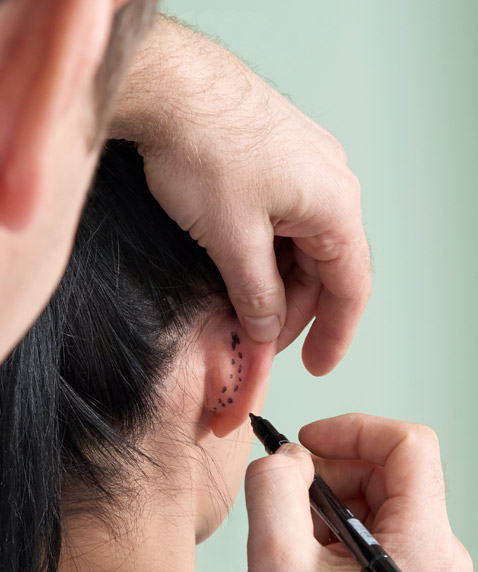Otoplasty (also known as Pinnaplasty or Ear Pinning Surgery) is a type of a surgical procedure used for the correction of prominent ears. This procedure is also known as otoplasty or ear pinning. This ear plastic surgery is conducted on people of both the sexes and of all ages, who wish to correct their ears that tend to stick out.
Some people may not bother about the “bat” shape of their ears, but, for others, continuous comments from others can lead to distress, particularly during school years. Otoplasty is the best and simple procedure that can solve the problem safely and quickly.
Ear pinning surgery involves making an incision just behind the ear in the natural fold where the ear joins the head. This lets the surgeon reshape the ear by removing some part of the cartilage. The surgeon can then use permanent internal stitches to keep the ears in their new place
Who are the best candidates for Otoplasty?
⦁ The best candidates for Otoplasty include both children and teenagers, although adults may undergo the surgery as well.⦁ This surgery is not recommended for children younger than five as their ears will still be growing and developing.
⦁ You can go for Otoplasty if your ears are protruding or sticking out at a prominent angle from your head.
⦁ Otoplasty is typically carried out in people who have one ear that sticks out much more than the other. In such cases, pinnaplasty can restore the symmetry of ears
What are the steps of Otoplasty?
⦁ Otoplasty can be carried out under general anesthesia. But in some cases, local anesthesia is also given so that the patient remains pain-free even when he or she wakes up. The doctor will advise which anaesthetic is the most appropriate, It is must to get rid of any form of hair interference during pinnaplasty, so elastic bands or latex bands can be used to manage hair. This allows the surgical field to remain free from hair.⦁ During pinnaplasty procedure, the surgeon makes incisions behind the ear and the cartilage may be re-shaped, folded or some part of it may be removed.
⦁ After that, cartilage is pinned down with stitches to hold the ear in its new position.
⦁ Finally, a dressing is placed to keep the ear comfortable.



